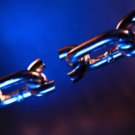How to fix broken links
The School is currently in the process of upgrading its website, and one aspect of this is reorganising the location of the pages you see. In certain situations you may be presented with a 'Page Not Found (404)' error page instead of the page you're looking for. This can be caused by two main factors, and you should attempt to rectify the problem by following the first procedure:
- Caching of an outdated page by your browser
- Genuine incorrect links
Caching of an outdated page by your browser
- Cause:
- Most web browsers store a copy of every page you visit in a 'cache' on your hard drive. This makes your browsing experience faster by removing the need to download the same page content from the internet. Unfortunately, if the page on the server is newer than the one in your cache, you may not be seeing the most up to date version. When web pages are moved to a different location and the page containing the links is out of date, inevitably you the user get an error message indicating the page cannot be found.
Remedy:- To solve this problem, obviously you need to force your browser to download a fresh copy of each page you visit from the internet and overwrite the outdated copy in your cache.
- Browse to the School home page (http://www.eleceng.adelaide.edu.au)
-
Hold the shift key down and click your browser's 'Refresh' or 'Reload' button.
-
Click on the link you want to follow
- Repeat this procedure on the next page you come to, and so on until you reach the page you're looking for.
- Notes:
- Depending on the exact configuration of your computer and web browser, you may need to close your browser and restart your computer before trying again. Each web browser has settings to control if and how the local cache is used. You may wish to inspect and adjust these settings if you have access to them, but in some cases you may still need to follow the above procedure regardless of how the cache is configured. For example, the ideal cache setting appears to be 'download a more recent version of the page if it exists' but this often does not work.
Genuine Broken Links
- Cause:
- Many files may be moved during a site overhaul to make the information structure more organised and intuitive. When this happens but a link still exists to the old location, clicking that link will present a 'Page Not Found (404)' error instead of the page you were looking for. While the vast majority of these obsolete links are corrected before a new site is made viewable to the public, invariably some of these are missed, particularly when they reside on pages other than main School webpages (for example, research group or personal homepages).
Remedy:- If you have followed the procedure outlined above in the 'Caching of an outdated page by your browser' article, the error is through no fault of your own. It more than likely is a genuine broken link that we need to know about, so please report the error to the Webmaster.
- While our own logs and software will detect these, reporting them manually will bring it to our immediate attention.
Thankyou for your time.
Webmaster.


